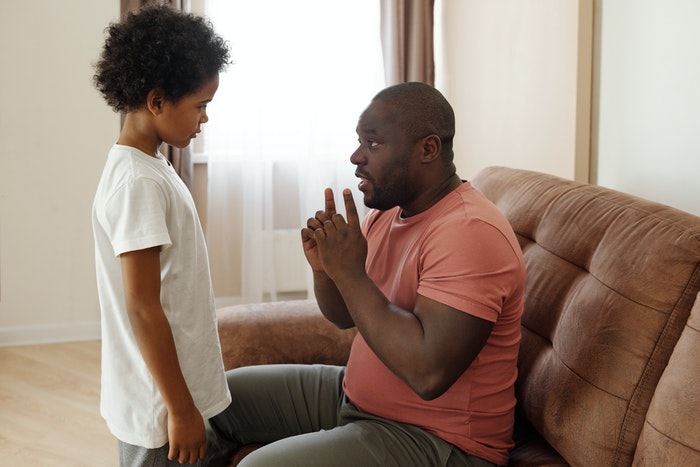
Children are exposed to images of violence almost every day, whether through the media or in real life. Consumption of violent imagery can take a harmful toll on a child’s mental and emotional well-being, research shows. Parents, especially those with young children, may be asking themselves how to talk about violence with their kids.
Here are four articles from The Conversation U.S. that offer insight into how to have hard conversations with children about violence.
1. Teach children to be resilient
Vanessa LoBlue, an assistant professor of psychology at Rutgers University-Newark, writes about ways parents can foster a supportive environment to help children develop resilience in stressful situations.
Genuinely listening to children talk about how they feel not only shows care and acceptance for the child, but it also helps them validate and contextualize their feelings, LoBlue writes. Allowing children some autonomy to solve their problems on their own – even if they fail – can help them practice resilience.
“Helping children build resilience is particularly critical now, as Americans face particular turbulence in daily life,” LoBlue writes. “Parents, too, need to guard their mental health in order to provide kids with crucial support: Building resilience isn’t just kid stuff.”
2. Teach kids to think critically about systemic inequality
Perhaps no profession has been under as much public scrutiny lately as that of the police officer. In less than a month’s span in spring 2021, there were at least three high-profile fatal police shootings that claimed the lives of young people: 13-year-old Adam Toledo in Chicago; 20-year-old Daunte Wright in Brooklyn Center, Minnesota; and 16-year-old Ma’Khia Bryant in Columbus, Ohio.
Not only do such experiences shape how children come to view the police, but those perceptions are formed at an early age, writes Adam Fine, a criminology and criminal justice professor, and Kathleen Padilla, a graduate student of criminology and criminal justice, both at Arizona State University.
“These perceptions don’t just affect individual kids; they affect society too,” Fine and Padilla write, noting that negative perceptions of police can dissuade young people of color from pursuing careers in law enforcement. “As the nation is engaging in critical discussions about the future of policing, part of that introspection should focus on why the pipeline of youth of color entering law enforcement is almost entirely shut off.”
3. Validate how your child feels
Children are, unfortunately, very familiar with violence. In today’s schools, students have active shooter drills and engage in anti-violence movements like March for Our Lives. Kyle Greenwalt, associate director of teacher preparation and associate professor of education at Michigan State University, and five other scholars offer suggestions about how to talk to students about the Jan. 6, 2021 Capitol riot.
Engaging students in discussions around past and current violent events can allow them to express and process what they feel in a safe environment, writes Greenwalt’s co-author, Kei Kawashima-Ginsberg, director of the Center for Information & Research on Civic Learning and Engagement at Tufts University. “Do not dehumanize any student because of their opinion – but teach them to always consider the intent and impact of their response.”
4. Know what your child is being exposed to
The internet is rife with violent imagery, leaving many children vulnerable to psychological harm. Daniel J. Flannery, director of the Begun Center for Violence Prevention Research and Education at Case Western Reserve University, describes how exposure to violence can lead to higher risk of depression, anger and anxiety.
“Parents have an important role to play,” Flannery writes. “Knowing where their children are, what they are doing and with whom are some of the best ways to help support children. That improves their ability to cope with what is going on in the world around them.”
Editor’s note: This story is a roundup of articles from The Conversation’s archives.
Alvin Buyinza, The Conversation and Jamaal Abdul-Alim, The Conversation
Alvin Buyinza, Editorial and Outreach Assistant, The Conversation and Jamaal Abdul-Alim, Education Editor, The Conversation
This article is republished from The Conversation under a Creative Commons license. Read the original article.
